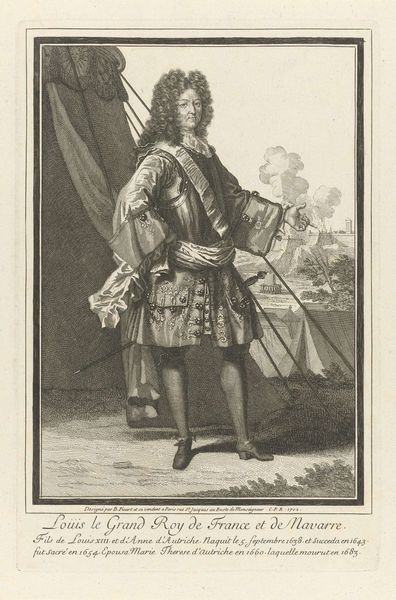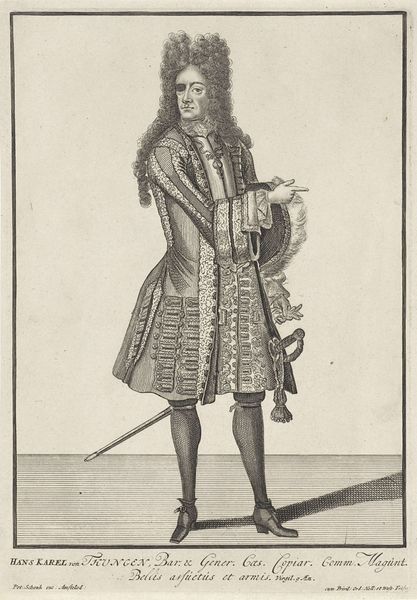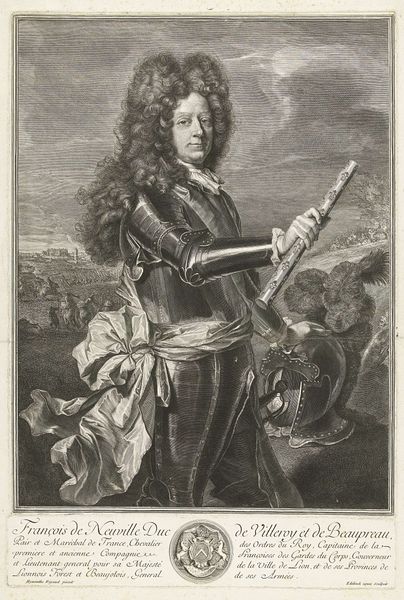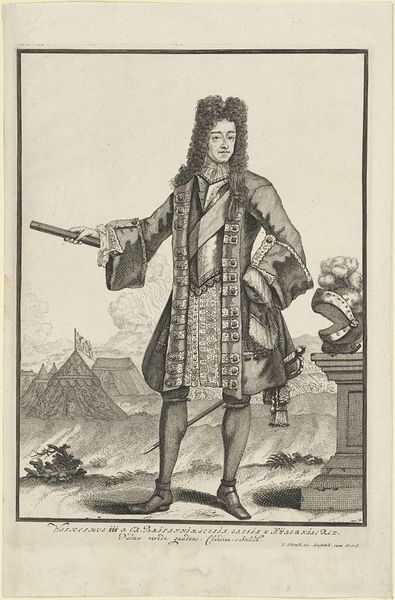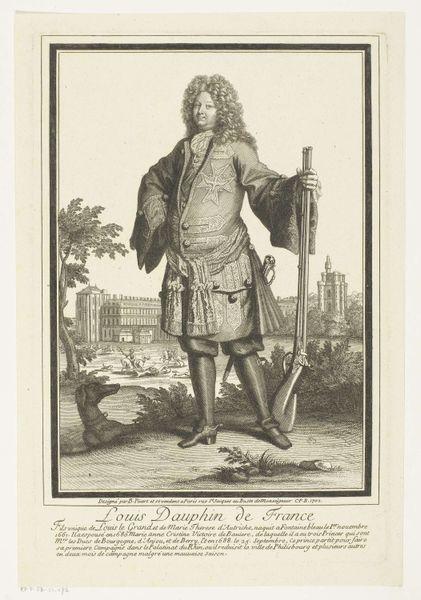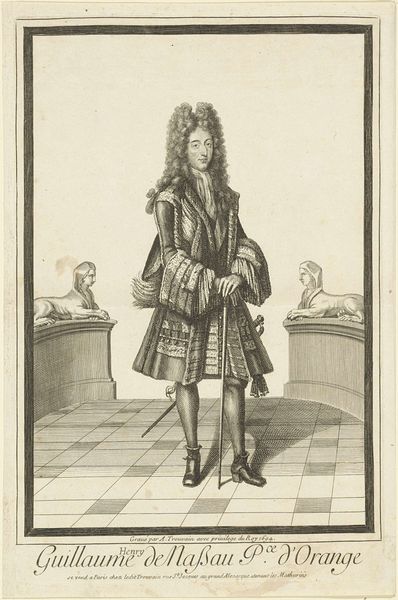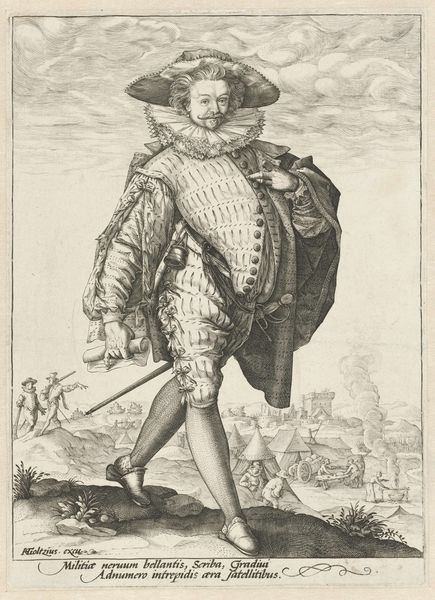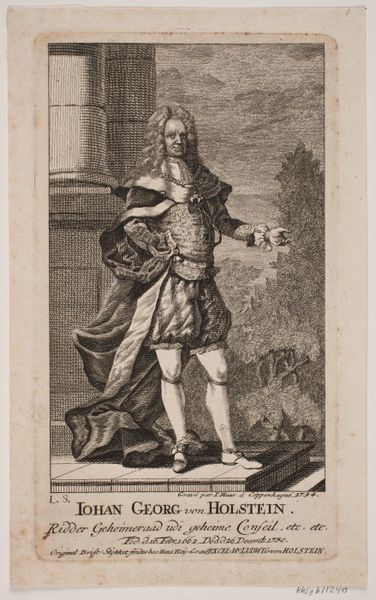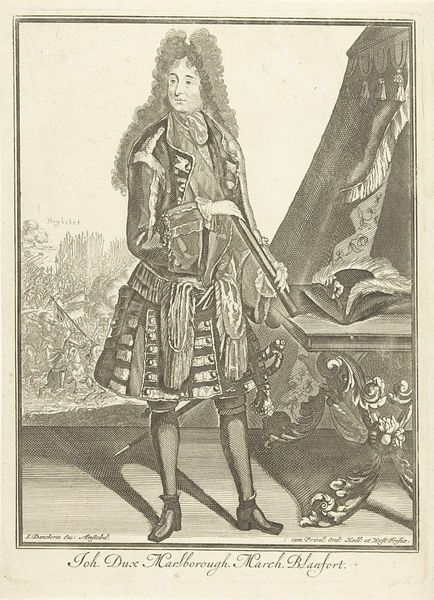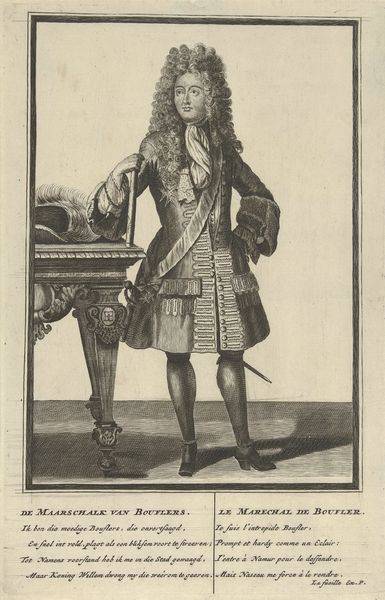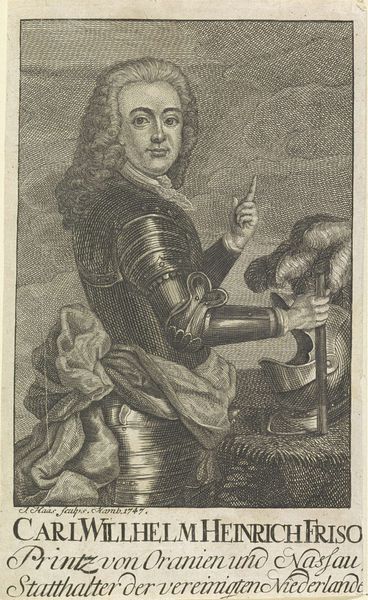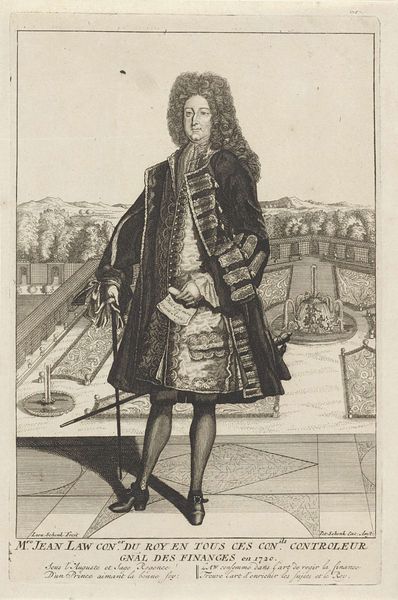
print, engraving
#
baroque
# print
#
old engraving style
#
history-painting
#
engraving
Dimensions: height 305 mm, width 205 mm
Copyright: Rijks Museum: Open Domain
Curator: This print, created in 1702 by Bernard Picart, presents a "Portret van Filips V van Spanje," held at the Rijksmuseum. As an engraving, it exemplifies the Baroque aesthetic. Editor: Gosh, he’s really owning that massive wig, isn't he? And that intense battlefield tableau fading into the background—it feels like he’s just strolling off the set of a historical drama, totally unruffled. Curator: It’s a statement, isn't it? Philip V, fresh to the throne, using symbolic language through imagery. The battle could signal the War of the Spanish Succession. Consider, the image positions him with both inherited power, indicated by bloodlines, and chosen authority. Editor: Right! It’s like, "Yeah, there's a war going on, but look how effortlessly regal I am." He's even got this little baton… I imagine him conducting the chaos with it. Plus, something about the fine line work almost gives him a slightly melancholic vibe, don't you think? Despite all the grandeur, a whisper of vulnerability? Curator: That’s an interesting read. Perhaps that speaks to his complex position. While he's presented as this divinely sanctioned ruler, his reign was constantly contested, forcing consideration about who is elevated in moments of historical turmoil, particularly when succession is itself problematic and divisive. It places him, not outside, but within history. Editor: So, is the artist intentionally undercutting his power, or boosting him up for the masses? Or is it perhaps simply an artistic commentary on a period where images of strength and composure masked internal conflict? Curator: Picart likely had to play a delicate game—he would want patronage and also to offer nuanced political messaging, and the success of artwork relies on engaging a viewing public who can parse visual cues based on social norms of the period, which suggests the melancholic read is possible and perhaps useful. Editor: What a tightrope walk for both the artist and the king! I suppose everything about power, especially captured in an image, always is. I keep noticing different elements with fresh eyes. Curator: Precisely, art invites ongoing exploration and diverse perspectives. Looking closely at this image has only made me consider even more the implications of colonial expansion and the challenges of creating a unified image in a time of widespread crisis.
Comments
No comments
Be the first to comment and join the conversation on the ultimate creative platform.
